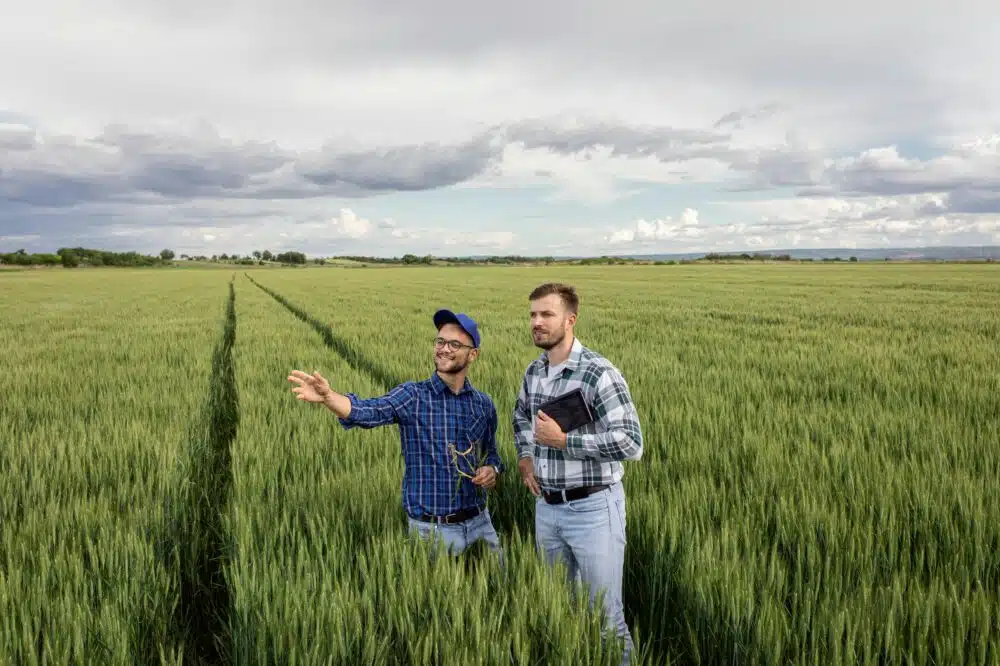From visibility to verifiability — how technology is redefining trust in carbon data.
Introduction: When Measurement Becomes the Message
For years, the carbon market has relied on modeling and satellite imagery to monitor land use, estimate carbon stocks, and demonstrate environmental impact.
But the era of approximation is ending.
Emerging technologies are transforming MRV (Monitoring, Reporting, and Verification) from an exercise in estimation into one of direct measurement and traceable evidence.
As buyers demand proof of impact and verifiers tighten requirements, project developers are re-engineering their MRV strategies around new sources of data to enable accurate soil carbon quantification.
And while there is no single technology that can “do it all,” the convergence of remote, proximal, and modeled approaches is setting a new standard for accuracy, scalability, and integrity.
Proximal Sensing: Bringing the Lab to the Field
Optical spectroscopy — using visible (VIS), near-infrared (NIR), or mid-infrared (MIR) wavelengths has become one of the most promising tools for soil carbon quantification in real time.
This technique, known as proximal sensing, allows project developers to generate high-quality soil data directly in the field, at a fraction of the time and cost of traditional laboratory analysis.
Modern in-field spectrometers, a form of carbon measurement technology, measure reflectance patterns that correlate precisely with organic carbon content.
When properly calibrated against certified soil labs, these sensors provide results consistent with ISO-accredited standards and can support verification under methodologies such as Verra VM0042 v2.1.
“What used to be modeled must now be measured,” one expert said during our recent webinar.
It captures the shift perfectly: data confidence begins in the soil itself, not in the spreadsheet.
Remote Sensing: Seeing Change at Scale
While proximal sensing provides accuracy, remote sensing delivers scale.
High-resolution satellite imagery, increasingly from constellations capable of sub-meter precision, now enables continuous soil carbon monitoring, land-use change detection, and vegetation dynamics analysis.
These signals inform baseline conditions, detect anomalies, and help stratify sampling campaigns. The advantage is spatial continuity: project developers can observe trends across thousands of hectares and deploy field measurements where changes matter most.
However, satellite imagery alone cannot capture the true variability of soil carbon.
That’s where integration with ground-truth data becomes critical, the hybrid MRV model that defines next-generation MRV.
Modeling: Making Sense of Complexity
Even the best datasets need interpretation.
This is the role of modeling, translating raw observations into validated carbon estimates.
Two modeling families are now central to soil carbon MRV:
- Digital Soil Mapping (DSM) uses machine learning and spatial predictors (topography, climate, vegetation indices) to interpolate soil properties between sampling points.
- Biogeochemical Models (BGCM) simulate the physical, chemical, and biological processes that control carbon fluxes in soils — helping predict long-term dynamics and permanence.
Models remain essential for upscaling field data and estimating uncertainty.
But their credibility increasingly depends on one factor: how well they’re anchored to real measurements and soil carbon quantification results.
The Hybrid MRV Model: Integration, Not Competition
There is no one-size-fits-all system for soil carbon MRV.
Different regions, soil types, and farming systems require tailored combinations of methods.
Emerging technologies are enabling precisely that flexibility.
A hybrid MRV model typically looks like this:
- Remote sensing identifies sampling zones and monitors landscape change.
- Proximal sensing provides direct, calibrated measurements of SOC.
- Models integrate both datasets to predict carbon stock changes across unsampled areas.
This triangulation yields data that are both auditable and scalable, a balance the market has struggled to achieve until now.
It also lowers verification costs, since field data reduce uncertainty and increase confidence for third-party auditors.
“No single technology can do it all,” another panelist remarked during the webinar.
“But together, they make verification a science instead of a debate.”
Credibility, Cost, and the ‘Boring’ Revolution
High-integrity carbon markets run on proof, not promise.
For soil carbon projects, that means producing data that can be traced, reproduced, and independently verified.
Emerging MRV technologies are addressing three persistent barriers:
- Credibility — field-based, instrument-verified measurements minimize bias and strengthen permanence claims.
- Scalability — remote and modeled data extend those measurements across landscapes efficiently.
- Affordability — automation and sensor miniaturization are driving down cost per hectare, allowing measurement density once deemed impossible.
As a result, soil carbon monitoring is becoming operationally routine — not heroic, not experimental, just quietly dependable.
That’s what real progress looks like.
From Monitoring to Measurement: A Market in Transition
Recent methodology updates, such as Verra VM0042, now explicitly recognize the role of emerging carbon measurement technology where calibration and validation are scientifically robust.
This is a major milestone: it means that direct soil data, when uncertainty is well described, can serve as a compliant and defensible input to verified carbon accounting.
The implications are profound:
- Developers gain flexibility in designing MRV systems suited to local conditions.
- Verifiers can audit with greater precision and confidence.
- Buyers get access to credits backed by tangible, repeatable evidence.
In short, technology is transforming soil carbon from an inferred metric into a measured commodity.
The Future of MRV Is Boring — and That’s a Good Thing
The evolution of soil carbon MRV is not about dazzling visuals or new buzzwords.
It’s about building systems that deliver data consistency, traceability, and auditability.
Emerging technologies, proximal, remote, and modeled are converging to make that possible.
As soil carbon quantification becomes more routine, uncertainty narrows, and credibility grows.
The future of carbon markets will depend on these boring advances: sensors that work, data that align, and measurements that no one needs to argue about.
Because in the end, the soil doesn’t lie, it just needs to be measured properly.



